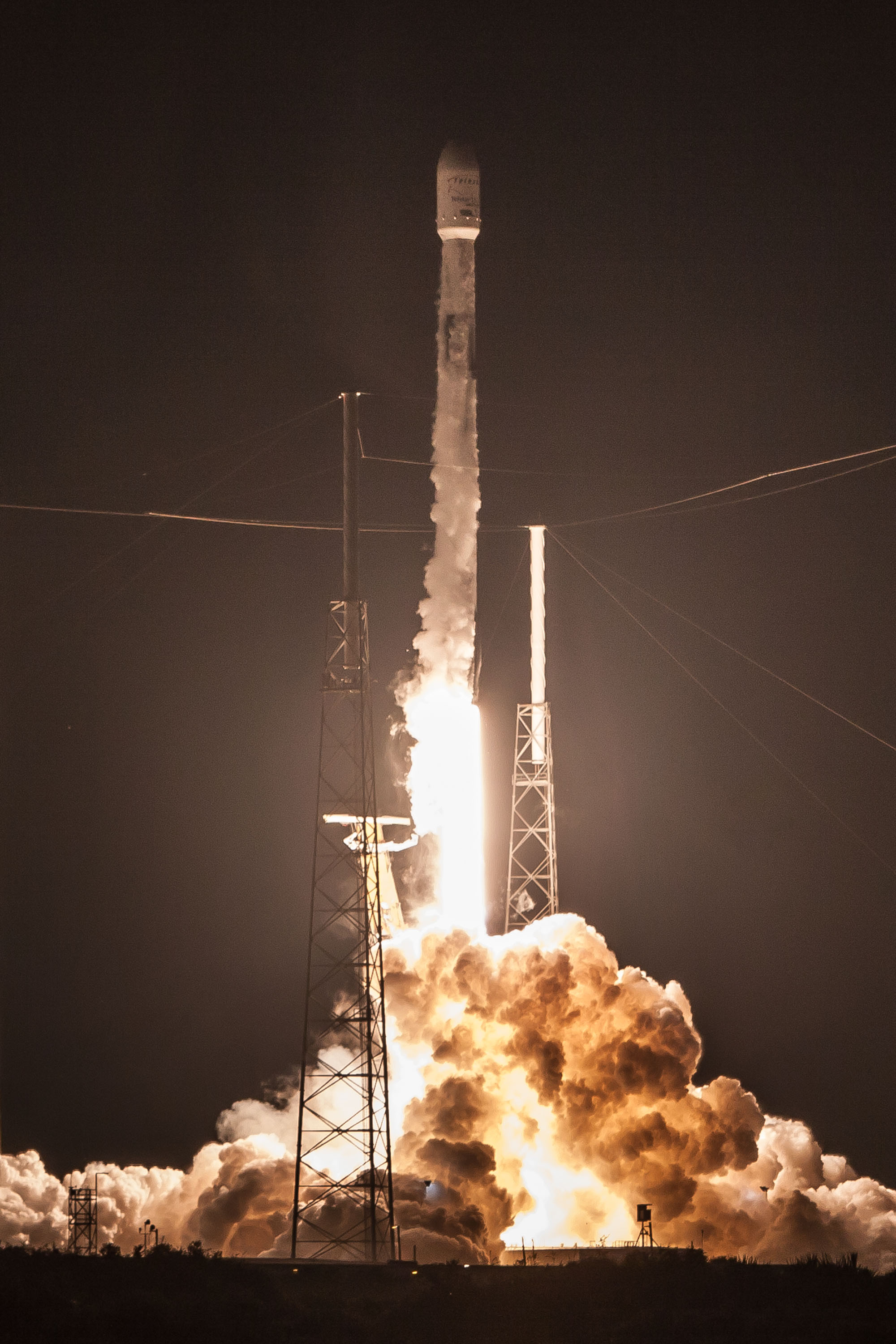Telesat Launches Telstar 19 VANTAGE Bringing New High Throughput Ku and Ka-band Capacity across the Americas and Atlantic
 Cape Canaveral, Florida, July 23, 2018 ̶̶̶̶̶̶ Telesat successfully launched its new Telstar 19 VANTAGE high throughput satellite (HTS) aboard a SpaceX Falcon 9 rocket. Liftoff occurred on Sunday, July 22nd, from Cape Canaveral Air Force Station.Built by SSL, a Maxar Technologies Company, Telstar 19 VANTAGE is the latest in a new generation of Telesat satellites with capacity optimized to serve the types of bandwidth intensive applications increasingly in demand by users worldwide.
Cape Canaveral, Florida, July 23, 2018 ̶̶̶̶̶̶ Telesat successfully launched its new Telstar 19 VANTAGE high throughput satellite (HTS) aboard a SpaceX Falcon 9 rocket. Liftoff occurred on Sunday, July 22nd, from Cape Canaveral Air Force Station.Built by SSL, a Maxar Technologies Company, Telstar 19 VANTAGE is the latest in a new generation of Telesat satellites with capacity optimized to serve the types of bandwidth intensive applications increasingly in demand by users worldwide.
Operating from Telesat’s orbital location of 63 degrees West, the same as Telesat’s highly utilized Telstar 14R satellite, Telstar 19 VANTAGE will bring a new level of performance and value for satellite broadband requirements on land, at sea and in the air. It will have distinct zones of coverage across the Americas and Atlantic, combining broad regional beams and high throughput spot beams in Ku-band with additional HTS spot beams in Ka-band. Through these innovative capacity and coverage options, Telstar 19 VANTAGE will deliver important advantages to Telesat customers who serve growing consumer, enterprise and mobility markets.
As previously announced, Hughes Network Systems LLC (Hughes) has signed a 15-year agreement for Telstar 19 VANTAGE Ka-band capacity that Hughes will utilize to expand its broadband satellite services for consumers and businesses in five South American countries. Hughes will refer to this capacity as “Hughes 63 West.”
Telesat also has long-term contracts for the entire Ka-band capacity of Telstar 19 VANTAGE over Northern Canada, including providing Bell Canada subsidiary Northwestel with the HTS spot beam capacity required to enhance broadband connectivity for all 25 communities in Nunavut, Canada’s northernmost territory.
“The pre-launch agreements Telesat has secured with Hughes and Bell Canada, combined with strong interest from other leading satellite service providers across the Americas and Atlantic, confirm that Telstar 19 VANTAGE delivers superior performance and value for today’s bandwidth intensive applications,” said Dan Goldberg, Telesat’s President and CEO. “The design and capabilities of Telstar 19 VANTAGE enable our customers to provide more advanced satellite broadband to their end users. We would like to thank SpaceX for the successful launch of Telstar 19 VANTAGE and for their dedication and professionalism throughout this mission. In a few weeks, Telesat will again be working with SpaceX for the launch of our next satellite, Telstar 18 VANTAGE over Asia.”
SpaceX successfully launched Telstar 19 VANTAGE to Geostationary Transfer Orbit (GTO) aboard a new Falcon 9 rocket. About 33 minutes after liftoff, Telesat’s newest satellite with a launch mass of 7,080 kg was deployed from the Falcon 9. Ku-band coverages of Telstar 19 VANTAGE include: Brazil regional beam, North Atlantic regional beam and HTS spot beams over Brazil and the Andean region. Ka-band HTS spot beams of Telstar 19 VANTAGE cover: South America, the Caribbean, the North Atlantic and Northern Canada.
Telstar 19 VANTAGE is expected to enter commercial service this summer after it has successfully completed orbit raising and comprehensive in-orbit testing. The satellite has a 15 year design life.





